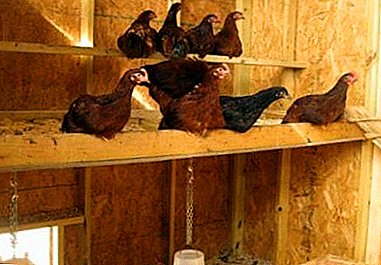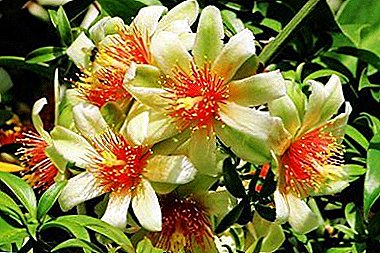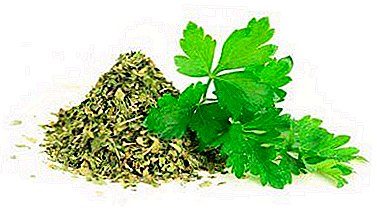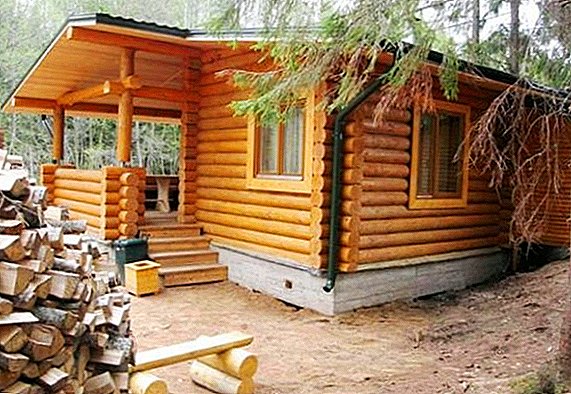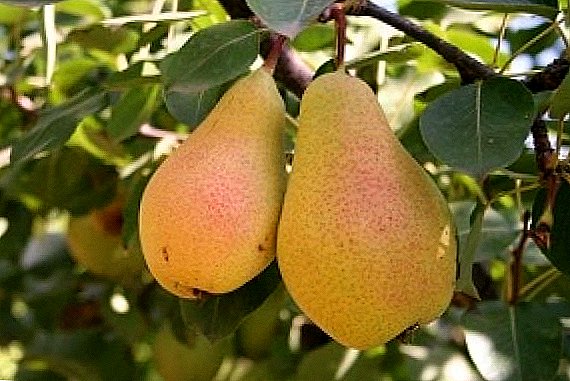
With the onset of summer, people not only have a good mood, but also the opportunity to consume fresh fruits and vegetables.
If you have your own garden or dacha, then there is an opportunity to grow these same fruits and vegetables yourself.
Today, you can grow anything: from apples and pears to oranges.
That's as for pears, then one of the most delicious varieties is considered "Forest Beauty", which will be discussed.
Variety description
"Forest Beauty" is a dessert variety of pears that is of Belgian origin. It was accidentally discovered by Chatillion at the beginning of the XIX century in a forest in the vicinity of Alosto in East Flanders.
Tree medium thick crown of medium thickness and has the shape of a pyramid. Fruiting begins 4 - 5 years after planting. Fruits are medium in size, resemble an egg. The peel is thin, the color varies from green to golden. Also, the fetus has a red spot on the side.
The flesh is white, juicy, with a sweet-sour taste. Fruit should be collected a few days before full maturity, which comes in late August. Otherwise, they will quickly deteriorate, as in the period of maturity they begin to crumble or over-mature. Productivity is high. Also high rates of frost resistance. Can withstand temperature drops to -45 ̊С. The variety is drought tolerant.
Virtues
- high frost resistance and drought resistance
-high yield
- beautiful taste characteristics
disadvantages
-fast ripening
- ripe fruits are showered
-fruits and leaves are strongly affected by scab
Features planting pears

"Forest Beauty" can grow on any soil in Europe. The most suitable land is black earth. On clay soils yield is very low. This variety is self-infertile, so it needs foreign pollen. Lemon, Williams and Josephine Mechelnskaya serve as the best pollinators. The tree will start to bear fruit faster if grafted on a quince.
You can plant the “Forest Beauty” both in spring (beginning of May) and in autumn (first half of October). Before planting, you must choose a place where the pear will grow constantly, as these trees do not accept transplants. A week before planting, you need to dig a hole for each seedling. The depth of each pit should not be less than 1 m, and the diameter - up to 80 cm.
The top layer of soil from the pit must be mixed with 2 buckets of humus, potassium sulfate and superphosphate (40 g each). 3 - 4 hours before planting, seedlings should be placed in water. In the pit of a mixture of soil and fertilizer is a mound, on which you need to distribute the roots of the seedling. Next, the roots are sprinkled with earth, which is left when digging holes. If necessary, next to the seedling you can drive a staketo which the sapling will be tied.
This stake serves as a support for the future pear. At the end, the pear is watered and the soil is loosened after the moisture is absorbed. Also, the circle around the seedling (diameter 60 - 70 cm) must be covered with mulch (peat, humus).
It is also interesting to read about the correct autumn pear care.
Tree care
1) Watering
Variety "Forest Beauty" is resistant to lack of moisture, but still need to be watered. Water is very necessary for young trees, as they are in the process of active growth. In the summer, young pears should be watered at least four times; for mature trees, watering is limited to three procedures. For the first time after planting, trees need to be watered before flowering. When a tree sheds extra buds, then water it a second time.
The third time the trees are watered to maturity, if necessary. To check whether there is enough moisture in the ground, you need to take a handful of soil from a depth of 40 cm and squeeze. If the earth crumbles, then you need to water, if not, then moisture is enough. For proper watering of a young tree, you need to make a circular ditch with a depth of 15 cm and fill this ditch with water. Such a ditch should be made at a distance of 10 - 15 cm from the tree.
For adult trees, 3–4 ditches are made along the boundaries of concentric circles. The last recess should lie 30 cm away from the crown projection. The last time the trees can be watered in October, subject to dry weather.

2) Mulching
Mulch trees should be regularly throughout the warm season. For the first time, the stem close to the trunk should be covered during planting, then - during growth.
As mulch, you can use grass, manure humus. Most importantly, there is no swing between the mulch and the tree itself.
3) Shelter
"Forest Beauty" is a very frost-resistant variety, so it does not need shelter. When the snow falls, it will be enough to cover them shtamb.
4) Pruning
Pruning trees should be 2 times a year - in spring and autumn. In the first year after planting, it is necessary to trim that part of the central shoot, which is located at a distance of 50 cm from the ground. If the tree is grafted, then you need to cut the center conductor over the kidney, which is directed in the opposite direction to the graft. In the second year, the center conductor and side branches must be cut to 20 cm.
In the summer you need to cut the branches that form the skeleton, keeping 3 sheets (7 - 10 cm). the remaining branches are cut so as to save 1 sheet. All subsequent years pruning keeps the same order. In early spring, the central shoot is shortened by 25 cm. Parts of the lateral branches along the buds, which are wrapped down, are also cut. When the tree reaches a height of 2 meters, it will only be necessary to shorten the central shoot.
5) Fertilizer
In the first year, trees do not need fertilizer, since the roots of the seedlings were distributed on a hill and tied up soil. Further, trees need mineral fertilizers annually, organic - once in 3 years. The main part of the feeding is made in the fall. On 1 square. 35-50 g of ammonium nitrate, 46-50 g of simple granulated superphosphate and 20-25 g of potassium sulphate should go to the ground. If the soil is already fertile, then there is no need to apply this amount of fertilizer (you need to reduce it by 2 times).
6) Protection
"Forest Beauty" is very badly damaged by scab, so it is extremely important to protect the trees from this fungal disease. Spores overwinter in fallen leaves, bark of shoots. With the defeat on the leaves and fruits appear dark spots. For protection, trees should be treated with a 0.5% solution of copper oxychloride during bud break and after flowering.





